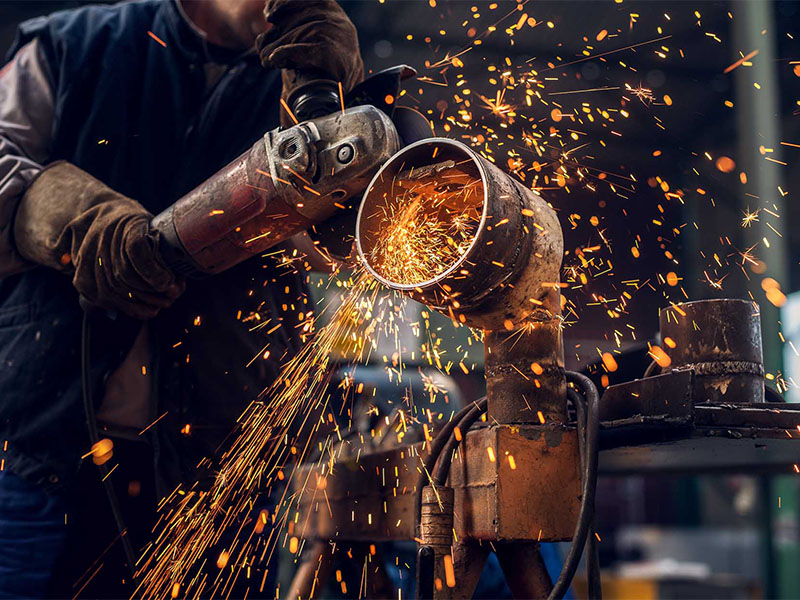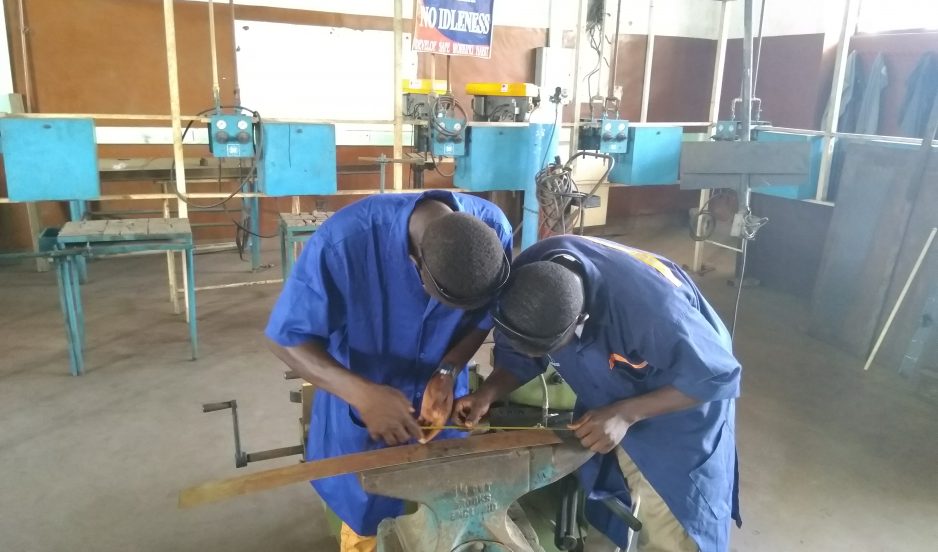Quick solutions to weld misalignment in Montana Mobile Welding and Repair Fabrication
Wiki Article
Usual Welding Repair Service Issues and Exactly How to Address Them Properly
Welding repair services frequently encounter a range of problems that can threaten the honesty of the last product. Typical issues consist of poor penetration, porosity, and misalignment, to name a few. Each problem provides distinct obstacles that need certain techniques for resolution. Recognizing these concerns is essential for welders intending to improve their abilities and outcomes. This conversation will certainly check out these common welding repair service issues and reliable approaches to resolve them.Insufficient Penetration
Inadequate penetration happens when the weld steel fails to completely fuse with the base product, causing weak joints and possible architectural failures. This concern usually comes from inadequate heat input, incorrect electrode angle, or improper welding speed. Welders might experience insufficient penetration as a result of a mistake of the required specifications for a details material density or type. Additionally, contamination on the base material's surface can prevent reliable bonding, exacerbating the problem. To deal with inadequate infiltration, welders must guarantee ideal setups on their equipment and preserve a tidy job surface area. Routine assessment of welds is advised to recognize any shortages early, permitting for timely improvements and the avoidance of endangered structural honesty in welded assemblies.Porosity
Porosity is a typical flaw in welded joints that materializes as small gas bubbles caught within the weld metal. This issue can endanger the stability of the weld, resulting in lowered stamina and possible failure under tension. Belgrade. Porosity usually emerges from contamination, wetness, or improper welding strategies, which allow gases to run away into the liquified weld swimming pool. To address porosity, welders need to ensure correct surface area preparation, keep a clean working atmosphere, and utilize appropriate welding criteria. Furthermore, picking the appropriate filler material and shielding gas can reduce gas entrapment. Routine evaluation and screening of welds can assist identify porosity early, assuring prompt rehabilitative actions are taken, therefore preserving the high quality and integrity of the bonded frameworkImbalance
Imbalance in welding can emerge from different variables, consisting of improper configuration and thermal expansion. Understanding the origin creates is crucial for reliable resolution. Numerous correction strategies are readily available to straighten components and ensure architectural stability.Root causes of Imbalance
Welding imbalance typically originates from a variety of underlying concerns that can endanger structural integrity. One main cause is incorrect fit-up of components before welding, which can lead to gaps and unequal surfaces. Variants in thermal development during the welding procedure can additionally lead to distortion, particularly if the materials being signed up with have different coefficients of expansion. Additionally, poor securing and fixturing may fail to hold components securely in place, bring about activity throughout welding. Improperly conserved equipment, including welding devices and tools, might present incongruities in the weld bead, additional contributing to misalignment. Ultimately, driver error, originating from inadequate training or experience, can also play a considerable duty in producing misaligned welds.Correction Methods Available
Resolving misalignment properly requires a mix of rehabilitative techniques customized to the certain issues available. One common approach is making use of jigs or components to hold elements in the proper setting throughout welding, making certain constant positioning. Furthermore, preheating the products can help in reducing distortion and enhance fit-up. For substantial misalignment, mechanical realignment methods, such as using hydraulic jacks or clamps, can be employed to remedy the setting before welding. Post-weld warmth treatment may additionally be essential to relieve anxieties created by imbalance. Cautious inspection and change during the arrangement phase can stop imbalance problems from becoming significant problems, promoting a smoother welding process and boosting total architectural honesty.Distortion
Distortion is a common obstacle in welding that can occur from various variables, including unequal heating & cooling. Understanding the causes of distortion is essential for carrying out efficient avoidance techniques. Resolving this problem not only improves structural integrity however additionally improves the overall top quality of the weld.Reasons of Distortion
When based on the intense warmth of welding, materials commonly go through adjustments that can lead to distortion. This phenomenon primarily arises from thermal development and contraction throughout the welding procedure. As the weld area warms up, the material broadens; upon cooling, it acquires, which can create internal anxieties. Furthermore, unequal heating throughout a work surface can worsen these tensions, causing bending or flexing. The kind of product additionally plays a considerable duty; metals with varying thermal conductivity and coefficients of expansion might react differently, leading to unpredictable distortions. Furthermore, inadequate joint style and poor fixturing can add to imbalance during welding, enhancing the likelihood of distortion. Understanding these causes is essential for effective welding repair and prevention approaches.Prevention Techniques
Effective prevention strategies for distortion during welding concentrate on managing warm input and making sure correct joint design. Maintaining a constant warmth input assists to lessen thermal development and tightening, which can cause distortion. Using methods such as preheating the work surface can likewise lower the temperature gradient, promoting consistent heating. Furthermore, selecting appropriate joint styles, such as T-joints or lap joints, can enhance stability and decrease stress focus. Executing correct fixturing to protect the workpieces in location even more help in preserving alignment throughout the welding process. Finally, staggered welding series can disperse warm a lot more evenly, avoiding local distortion. By using these techniques, welders can greatly decrease the possibility of distortion and improve the total quality of their welds.Cracking
Fracturing is a typical concern run into in welding repair work, commonly more resulting from various variables such as improper air conditioning rates, product selection, or poor joint prep work. The incident of splits can substantially compromise the integrity of the weld, leading to prospective failings throughout operation. To address this concern, welders have to first examine the origin, ensuring that products are suitable and properly picked for the specific application. In addition, controlling the air conditioning price throughout the welding process is essential; rapid air conditioning can generate tension and result in fracturing. Proper joint style and prep work additionally add to decreasing the threat. Applying these strategies can improve weld high quality and longevity, eventually reducing the probability of breaking in ended up weldments.
Insufficient Fusion
A considerable concern in welding fixings is incomplete fusion, which happens when the weld steel does not sufficiently bond with the base material or previous weld passes - Montana Mobile Welding and Repair. This problem can cause weaknesses in the joint, potentially jeopardizing the stability of the bonded framework. Factors contributing to incomplete combination consist of not enough warm input, improper welding technique, and contamination of the surfaces being joined. To address this problem properly, welders must guarantee correct pre-weld cleaning and surface prep work, in addition to readjust their welding criteria to accomplish adequate penetration and combination. Regular examination during the welding procedure can likewise assist identify insufficient fusion early, enabling for prompt restorative procedures to boost the total top quality of the weldOverheating
While welding repair work can boost architectural integrity, overheating provides a substantial challenge that can cause product deterioration. Extreme warm throughout welding can modify the mechanical residential or commercial properties of metals, resulting in minimized toughness, raised brittleness, and warping. This phenomenon is specifically important in high-stress applications where architectural reliability is extremely important. Recognizing getting too hot can include visual examinations for discoloration or distortion, along with checking temperature level throughout the welding process. To minimize the dangers connected with getting too hot, welders should use ideal techniques, such as regulating warmth input, adjusting traveling rate, and making use of suitable filler materials. Furthermore, executing pre- and post-weld heat therapies can help bring back product buildings and boost the overall top quality of the repair work, making certain long-lasting performance and safety and security.Regularly Asked Inquiries
What Are the Common Signs of a Welding Issue?

How Can I Examine My Welds for Top quality?
To test welds for top quality, one can use aesthetic examinations, ultrasonic screening, and radiographic techniques. Each technique assures structural stability, identifies flaws, and validates adherence to defined requirements, ultimately boosting the dependability of the welded joints.What Security Safety Measures Should I Take While Welding?
When welding, one must focus on safety by using suitable personal safety tools, ensuring Bonuses proper air flow, safeguarding combustible products away, preserving a clean workspace, and understanding environments to avoid accidents and injuries.Can I Repair a Weld Without Remodeling the Entire Joint?
Fixing a weld without redesigning the entire joint is feasible, relying on the damages (Montana Mobile Welding and Repair Fabrication). Strategies such as grinding, adding filler product, or utilizing a welding process can properly deal with particular flaws while protecting the surrounding structureWhat Equipment Are Vital for Efficient Welding Repairs?
Vital devices for effective welding repairs consist of a welding machine, cord brush, grinder, safety gear, clamps, and filler materials. Each device plays a vital role in guaranteeing top quality and safety throughout the repair procedure. Porosity usually emerges from contamination, dampness, or improper welding strategies, which allow gases to leave right into the liquified weld swimming pool. Improperly kept devices, including welding equipments and tools, might introduce variances in the weld grain, more contributing to imbalance. When subjected to the extreme warm of welding, products typically undergo modifications that can lead to distortion. Cracking is a common problem run into in welding repair work, usually resulting from numerous variables such as improper cooling prices, material option, or poor joint prep work. A substantial concern in welding repair services is insufficient combination, which happens when the weld steel does not properly bond with the base product or previous weld passes.Report this wiki page